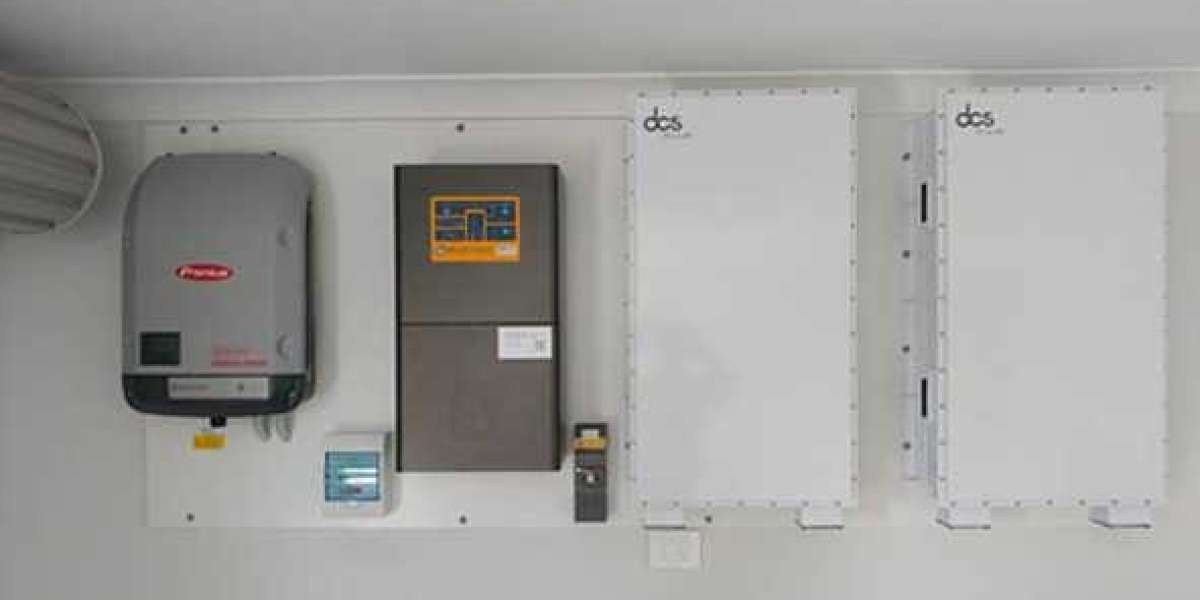In an era where sustainability is more than just a buzzword, Stand Alone Power Systems emerge as transformative solutions for remote areas. These innovative systems provide energy independence while reducing reliance on traditional power sources. Imagine communities living in isolation, once constrained by limited access to electricity, now thriving with the help of renewable energy technologies. From their essential components to their role in supporting rural development, discover how stand-alone power systems can pave the way for a brighter future in even the most isolated regions.
Key Components of a Stand-Alone Power System Explained
Stand-alone power systems have several key components that work together to generate, store, and distribute energy efficiently. At the heart of these systems is a renewable energy source, typically solar panels or wind turbines. These devices capture natural energy and convert it into electricity.
Next comes the battery storage system. Batteries store excess energy produced during sunny or windy conditions for use when generation dips. This ensures a steady power supply even in fluctuating weather conditions.
An inverter plays a crucial role by converting direct current (DC) from batteries into alternating current (AC), which most household appliances use. Together, these components create a reliable and self-sufficient energy solution tailored for remote locations where traditional grid access is limited or non-existent.
Why Remote Communities Prefer Stand-Alone Solar Power Systems
Remote communities often face unique challenges, particularly regarding energy access. Stand-alone solar power systems provide a practical solution for these areas, reducing dependence on traditional grid connections that may be unreliable or nonexistent. By harnessing the sun's energy, these systems offer a sustainable alternative.
Another significant advantage is cost-effectiveness. Residents can allocate resources more efficiently with no utility bills and minimal maintenance costs. Additionally, many standalone systems are designed to be easily scalable, allowing communities to expand their energy capabilities as needed.
Environmental impact is also a significant consideration for remote areas. Utilising renewable solar energy helps reduce carbon footprints and promotes sustainability. This aligns with the values of many remote residents who prioritise preserving their natural surroundings while ensuring reliable power sources for daily life.
Reducing Diesel Dependency with Stand Alone Power Renewable Energy Systems
Many remote communities rely on diesel generators for their electricity needs. These systems are costly and environmentally damaging. Transitioning to stand-alone power renewable energy systems offers a much-needed alternative.
By harnessing solar or wind energy, these systems can provide a consistent power supply without the drawbacks of fossil fuels. This shift reduces greenhouse gas emissions and less air pollution, contributing to healthier living conditions.
Additionally, as fuel prices fluctuate, dependence on diesel becomes increasingly risky for isolated areas. Stand Alone Power renewable systems offer stable energy costs while promoting sustainability and independence from volatile fuel markets. Embracing this technology empowers communities to create a cleaner future while enhancing their resilience against external crises.
How Stand-Alone Systems Improve Energy Access in Isolated Areas
Stand-alone power Systems play a crucial role in enhancing energy access for isolated communities. By harnessing renewable resources like solar and wind, these systems deliver reliable electricity where traditional grids often fall short. This independence from centralised power sources fosters self-sufficiency.
Isolated areas frequently have limited infrastructure, making extending the grid impractical or cost-prohibitive. Stand-alone systems eliminate that barrier, allowing remote homes and businesses to tap into clean energy solutions tailored to their unique needs.
Moreover, greater access to electricity empowers local economies by supporting small enterprises and improving living conditions. As more households adopt stand-alone technologies, overall quality of life improves significantly, paving the way for sustainable growth in rural settings.
Choosing the Right Battery Storage for Your Stand-Alone System
Selecting the proper battery storage is crucial for optimising your stand-alone power system. Consider factors such as capacity, discharge rate, and cycle life. Lithium-ion batteries are popular due to their efficiency and longevity, but come with a higher price tag. Lead-acid batteries, while more affordable, require regular maintenance.
Evaluate how much energy you need to store based on your consumption patterns. A larger capacity may be necessary for areas with inconsistent sunlight or wind availability. Additionally, ensure that the chosen battery can handle local temperature fluctuations without compromising performance.
When choosing your battery system, don’t overlook the importance of compatible inverters and charge controllers. Proper integration maximizes energy capture and minimizes waste, ensuring a reliable power supply that can efficiently meet all demands.
Hybrid Stand Alone Power Supply: Combining Solar, Wind, and Battery
Hybrid Stand Alone Power Supply offers a versatile approach to energy generation by combining solar, wind, and battery technologies. This integration maximizes energy output during varying weather conditions and seasonal changes. By harnessing both solar panels and wind turbines, these systems can continuously generate electricity even when one source is underperforming.
Battery storage plays a critical role in hybrid setups. It stores excess energy produced during sunny or windy days for use during periods with less renewable input. This ensures that remote areas have a reliable power supply at all times.
Moreover, hybrid systems can reduce operational costs over time. With diverse energy sources working together, users experience more stable pricing and increased independence from traditional fossil fuels. Embracing this technology promotes sustainability while enhancing resilience in isolated communities.
How Stand-Alone Power Systems Support Sustainable Rural Development
Stand-alone power Systems play a vital role in sustainable rural development by providing reliable energy access to remote communities. These systems empower residents to harness renewable resources, promoting self-sufficiency and reducing reliance on traditional power grids.
With the integration of solar panels or wind turbines, local economies can flourish. Businesses can operate more efficiently, while schools and health facilities benefit from consistent electricity. This fosters an environment where education and healthcare can thrive.
Additionally, these systems help reduce environmental impact by minimising carbon footprints associated with fossil fuels. As rural areas adopt cleaner technologies, they contribute positively toward climate goals while enhancing the quality of life for their inhabitants.
Installation Tips for Stand-Alone Systems in Harsh Environments
Installing stand-alone power systems in harsh environments requires careful planning to ensure long-term performance, durability, and safety. Whether facing extreme heat, cold, wind, or dust, here are essential installation tips to help you set up a reliable system:
Choose Rugged, Weatherproof Components
Select equipment rated for the specific environmental conditions, such as waterproof solar panels, corrosion-resistant mounts, and batteries with sealed enclosures. This ensures the system can withstand the elements without degrading quickly.
Secure Mounting and Structural Support
Install all components on sturdy, reinforced mounts that resist high winds or shifting ground. Proper anchoring is especially important in remote or exposed locations to prevent damage or system failure.
Optimise Ventilation and Cooling
In hot environments, inverters, charge controllers, and batteries should be installed in ventilated enclosures or shaded areas. Overheating can reduce efficiency and lifespan, so airflow and heat management are critical.
Use UV-Resistant and Armoured Cabling
Run cabling through UV-protected conduit and choose cables to resist temperature extremes and physical wear. This helps prevent damage from sun exposure, rodents, or movement due to wind and terrain shifts.
Plan for Easy Maintenance Access
Even in remote or harsh areas, ensure components are installed to allow for safe and easy maintenance. Clear labelling and organised wiring can save time during troubleshooting or upgrades.
Solar vs Wind: Best Choice for Remote Stand-Alone Power
Solar and wind offer unique advantages when considering renewable energy options for remote stand-alone power systems. Solar panels are often easier to install and maintain. They convert sunlight into electricity efficiently during the day when energy demand is highest.
On the other hand, wind turbines can generate power even when the sun isn’t shining. Areas with consistent winds might provide a more reliable energy source throughout the year. Their footprint can be smaller than that of solar farms as well.
The choice between solar and wind ultimately depends on local conditions. Geography, climate, and available space are crucial in determining which system will work best in a specific location. Tailoring your solution to these elements ensures better efficiency and sustainability for remote communities.
Government Incentives Supporting Stand Alone Power Supply Systems in Remote Australia
The Australian government actively promotes Stand Alone Power Supply Systems to enhance energy access in remote areas. Various incentives, such as grants and rebates, encourage the adoption of renewable technologies. These financial supports significantly reduce the initial costs for communities investing in sustainable energy solutions.
Programs like the Renewable Energy Target (RET) and specific funding initiatives aim to stimulate local economies while reducing reliance on fossil fuels. By making these resources accessible, rural communities can transition more smoothly toward cleaner energy alternatives.
Additionally, state-specific programs often provide tailored support for residents and businesses considering stand-alone systems. This targeted approach ensures that diverse needs are met, helping to create a more resilient energy landscape across remote Australia.
Common Challenges in Stand-Alone Power and How to Solve Them
Stand-alone power Systems face several challenges, particularly regarding reliability and maintenance. Remote locations can make access difficult, leading to delays in repairs. To address this, implementing predictive maintenance techniques can help anticipate issues before they escalate.
Weather conditions also significantly affect system performance. Extreme temperatures or heavy rainfall can hinder solar panel efficiency or battery functionality. Investing in high-quality equipment designed for harsh climates will enhance durability and ensure continuous operation.
Another common challenge is the initial investment cost. While Stand Alone offer long-term savings, upfront expenses may deter some users. Exploring government incentives and financing options can alleviate financial burdens, making it easier for communities to adopt these sustainable solutions.
Conclusion
Stand Alone Power Systems represent a significant shift in how we approach energy access. They empower remote communities by providing reliable, sustainable power solutions tailored to their unique needs. These systems offer independence from traditional energy infrastructures by harnessing renewable resources like solar and wind. The transition to stand-alone setups is not just about technology; it's about fostering resilience in isolated areas. With innovations continuously emerging, the future looks promising.
FAQs
What are Stand Alone Power Systems?
Stand Alone Power Systems are self-sufficient energy solutions designed to provide electricity in remote or off-grid areas. They typically utilise renewable energy sources such as solar panels, wind turbines, and battery storage to generate and store power for local consumption.
How do I choose the right components for my Stand-Alone Power System?
Selecting the right components depends on several factors, including location, energy needs, and budget. First, consider assessing your average daily energy consumption. Then, look at solar panel output based on sunlight availability in your area, along with compatible batteries that can effectively store generated power.
Are there government incentives available for installing Stand-Alone Power Systems?
Yes, many governments offer financial incentives to encourage the adoption of renewable energy systems. In Australia specifically, programs may subsidise initial installation costs or provide tax benefits. It's worth researching local regulations and contacting relevant agencies for more information on what’s available near you.
Related Business Listings |








